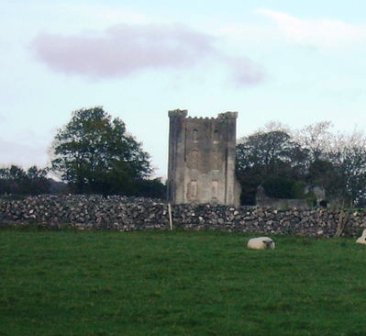Glennagloughaun North
Houses within 5km of this house
Displaying 7 houses.
Houses within 5km of Glennagloughaun North
Displaying 7 houses.
| House name | Description | |
|---|---|---|
| Monivea | An O'Kelly tower house, acquired by the ffrenches in the early 17th century, who made additions in the 18th century. Held in fee by Robert French at the time of Griffith's Valuation when it was valued at £40. In 1894 Slater refers to it as the seat of Acheson French. In 1938 it was bequeathed by Kathleen French to the State as a home for artists, subsequently demolished and now only the original tower remains. A mausoleum, modelled on the tower house and constructed at the end of the nineteenth century, is located in the adjacent woodland. |

|
| Corrandoo House | This property was granted to the ffrenches in the late 17th century in lieu of Monivea Occupied by the Reverend Mr Marsh in the 1770s sand 1780s, by M. Dowdall in the 1830s and Thomas Kenny at the time of Griffith's Valuation when it was valued at £10. It is no longer extant. |

|
| Killaclogher House/Spring Park | This property is labelled Spring Park on the First edition Ordnance Survey map and as Killaclogher House on the 25-inch edition of the 1890s. It was the main home of the Kenney family in the 18th and 19th centuries. At the time of Griffith's Valuation it was valued at over £16 and held in fee by James C. Kenny. The house is no longer extant. |

|
| Ryehill | Ryehill House was built in the early part of the 19th century and was still occupied in 1906 by a member of the Roche family. Unroofed in the mid 1950s only the impressive gateway and yard buildings still remain. |

|
| Belleville | Built in the late 18th and early 19th century. Belleville was held in fee by Thomas Mahon at the time of Griffith's Valuation when it was valued at £30. The only part of the house remaining is the tower. |

|
| Tiaquin | At the time of the Burke sale in 1851 the house was described as an 'old fashioned cottage style' type of building. A gable end of the house still stands with the nearby farm buildings still in use. |

|
| Knockbrack | A house built in the early 1850s by the Hall family and occupied by them until 1922. In 1906 it was valued at £36. The roof of the house was later removed. Only the outline of the basement walls now remain. The farmyard buildings are still used by the Feeney family. |

|

